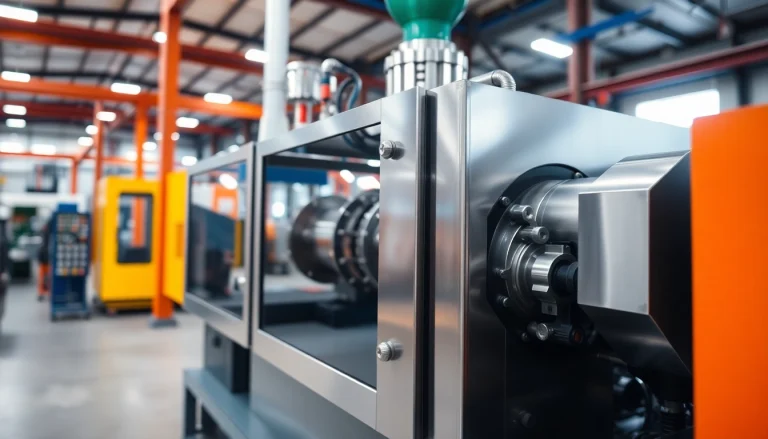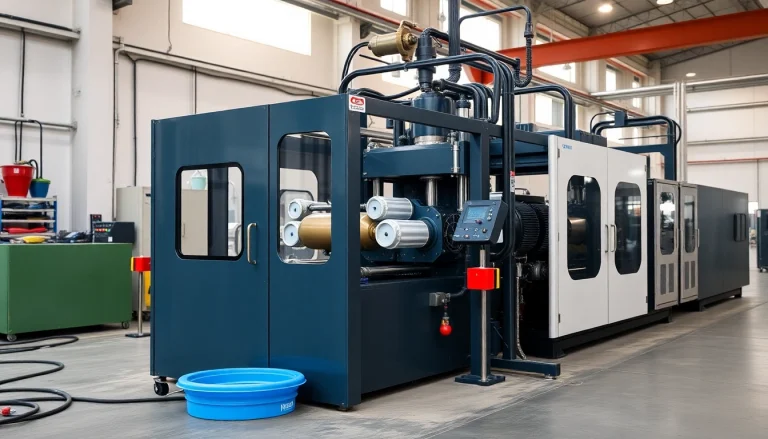Understanding Precision Die Cutting
Precision die cutting is a critical manufacturing process widely used in various industries for producing high-quality custom parts and components. This technique involves the intricate process of cutting shapes and designs from materials like paper, plastic, rubber, and metal with exceptional accuracy and uniformity. The demand for precision die cutting continues to rise as industries seek advanced solutions for creating intricate designs that meet stringent performance standards.
What is Precision Die Cutting?
At its core, precision die cutting is the process of cutting a material into specific shapes using a sharp blade or a die. These dies are custom-designed tools that can produce shapes with a high degree of accuracy, making them indispensable in industries that require consistent and precise manufacturing. Whether it is for gaskets, insulation parts, or intricate shapes for packaging, precision die cutting offers a solution that ensures not only accuracy but also repeatability across large-scale production runs.
The Importance of Precision in Die Cutting
Precision in die cutting is essential for several reasons:
- Quality Control: Ensuring each component meets required specifications without deviation in size or shape.
- Material Utilization: Minimizing waste by optimizing the layout of cuts to use as much of the material as possible.
- Speed of Production: High precision allows for faster setups and shorter production times, leading to cost savings and increased output.
- Consistency: Providing uniformity across products, which is critical in applications such as aesthetics in packaging or the functionality of components in assembly.
Applications of Precision Die Cutting in Various Industries
Precision die cutting is utilized across a variety of industries, each leveraging this technology to enhance their manufacturing capabilities:
- Automotive: Used for cutting gaskets, insulation, and various interior components, ensuring parts fit perfectly and function effectively.
- Electronics: Provides precision cuts for insulation materials, shielding, and parts used in electronic devices.
- Medical: Plays a vital role in producing components for devices, packaging, and labels that require high levels of hygiene and precision.
- Packaging: Enables the design of custom packaging solutions that are both aesthetically pleasing and functional.
- Textiles: Used in producing patterns and components for apparel and upholstery, ensuring high precision in designs and fabric types.
Types of Die Cutting Techniques
Flatbed vs. Rotary Die Cutting Techniques
Die cutting techniques can generally be divided into two primary categories: flatbed and rotary die cutting. Each method offers distinct advantages based on the application.
- Flatbed Die Cutting: This technique utilizes a flatbed press where a steel rule die is pressed into the material. It’s ideal for low to medium production volumes and offers flexibility in design. The flatbed method can handle a wide range of materials but may require longer setup times compared to rotary systems.
- Rotary Die Cutting: In rotary die cutting, the material is fed through a rotating cylinder mounted with a die. This method is exceptionally efficient for high-volume production and is capable of cutting complex shapes with high speed and precision. It is particularly effective for continuous materials like rolls of paper or film.
Laser Die Cutting: Precision and Efficiency
Laser die cutting is an advanced method that uses a focused beam of light to cut materials. This technique allows for incredibly intricate designs and is especially useful for materials that would be difficult to cut using traditional steel rule or rotary dies.
Some key advantages of laser die cutting include:
- Versatility: Capable of cutting a variety of materials, including plastics, rubber, fabric, and thin metals.
- Minimal Waste: Laser cutters can optimize material use by precisely outlining cuts, resulting in less scrap material.
- No Need for Physical Dies: This reduces costs related to die creation and allows for rapid prototyping.
Comparative Advantages of Different Die Cutting Methods
Choosing the appropriate die cutting method depends on various factors, including the material type, production volume, and required precision. A quick comparison includes:
| Type | Best For | Advantages |
|---|---|---|
| Flatbed Die Cutting | Custom shapes in low to medium volumes | Flexibility in design, lower initial costs |
| Rotary Die Cutting | High-volume runs and continuous roll materials | Speed, efficiency, consistent quality |
| Laser Die Cutting | Complex shapes, rapid prototyping | High precision, reduced waste, no tooling costs |
Key Benefits of Precision Die Cutting Services
Enhanced Accuracy and Quality Control
Precision die cutting services provide manufacturers with the assurance that every part produced adheres to the highest quality standards. The exactness of these services translates directly into improved product performance and customer satisfaction.
Advanced die cutting technology—combined with rigorous quality control procedures—ensures that tolerances are strictly maintained, resulting in minimal errors during production.
Cost-Effectiveness for Custom Projects
While the upfront costs for precision die cutting can be higher due to the nature of the technology and setup, the long-term savings become apparent when considering material utilization and reduced labor costs. Precision die cutting minimizes material waste and expedites the production process, often leading to significant savings.
Quick Turnaround Times for Manufacturing
Manufacturers require speed without sacrificing quality, making the fast turnaround time of precision die cutting invaluable. With the ability to produce complex shapes efficiently, businesses can meet tight deadlines and respond rapidly to market changes or customer needs.
Common Materials Used in Precision Die Cutting
Choosing the Right Material for Your Project
When opting for precision die cutting, selecting the correct material is crucial. Different materials—such as cardboard, foam, plastic, and metal—offer unique properties that impact the final product’s performance.
Considering factors such as durability, flexibility, and aesthetic appeal can help in determining the best material for your specific application.
Characteristics of Popular Die Cutting Materials
Each material commonly used in precision die cutting has its own characteristics:
- Paper/Cardboard: Affordable and widely available; ideal for packaging and prototypes.
- Plastic: Versatile and can be made rigid or flexible; used in various applications from packaging to device casings.
- Foam: Excellent for cushioning and insulation; often used in medical packaging and protective cases.
- Metal: Offers durability and strength; perfect for components requiring high resistance to wear and tear.
Material Compatibility with Different Die Cutting Techniques
The compatibility of materials with specific die cutting techniques is another essential consideration. Not all materials work well with every die cutting method. For instance:
- Flatbed die cutting is suitable for thicker materials and provides versatility.
- Rotary die cutting is preferred for thin, flexible materials where speed is essential.
- Laser die cutting can accommodate a vast range of materials, including very thin or intricate designs.
Choosing the Right Precision Die Cutting Partner
Evaluating Vendors: Quality and Experience
When selecting a precision die cutting service provider, it’s vital to assess their expertise and quality control measures. Look for vendors with a proven track record in delivering high-quality products consistently across various industries. Vendors should be familiar with the latest technology and capable of handling a range of materials and applications.
Questions to Ask Your Die Cutting Supplier
Before entering a contract with a die cutting provider, ensure you ask the following:
- What materials are you experienced in cutting?
- What are your production capabilities in terms of volume and turnaround time?
- What quality control measures do you have in place?
- Can you provide references or case studies from past clients?
Assessing Customer Reviews and Case Studies
Researching customer reviews and case studies provides insight into a vendor’s reliability and quality of service. Look for testimonials that showcase how a company has successfully met client needs. Case studies that examine past projects can reveal the provider’s problem-solving abilities, attention to detail, and commitment to customer satisfaction.




